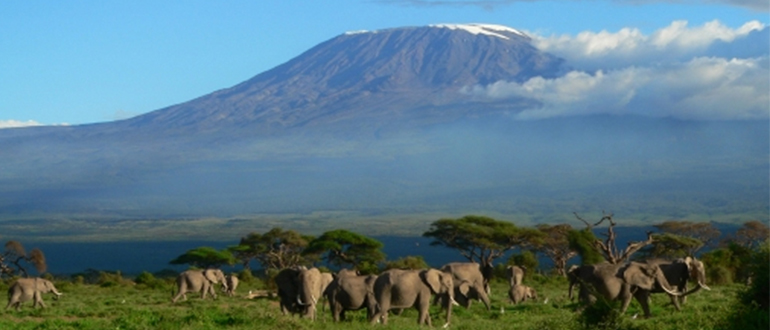RWANDA GORILLAS, CULTURE AND WILDLIFE OF TANZANIA


Tanzania has it all: The tallest mountain in Africa, Mt Kilimanjaro, a hiker's delight. The greatest game park in the world, Serengeti National Park, home of the most storied annual wildlife migration anywhere. The biggest volcano caldera in Africa, the Ngorongoro Crater, with unsurpassed wildlife. The largest wildlife area in the world, Selous Game Reserve. Africa's most exotic and compelling island, the legendary Zanzibar.Plan your next African journey with Advantage Safaris Africa.
Capital: DODOMA
Largest city: DAR ES SALAAM
Official languages: SWAHILI.
Area Total: 945,087KM
Water (%): 6.2
Population: 40,500,345
Currency: TANZANIAN SHILLINGS (TZS)
Time zone: E.A.T UTC +3
Internet TLD: .tz
Calling code +255
Tanzania, officially the United Republic of Tanzania (Swahili: Jamhuri ya Muungano wa Tanzania), is a country in East Africa bordered by Kenya and Uganda on the north, Rwanda, Burundi and the Democratic Republic of the Congo on the west, and Zambia, Malawi and Mozambique on the south. To the east it borders the Indian Ocean.
The country's name is a portmanteau of Tanganyika, the large mainland territory, and Zanzibar, the offshore archipelago.
The two former British colonies united in 1964, forming the United Republic of Tanganyika and Zanzibar, which later the same year was renamed the United Republic of Tanzania.
In 1996 government offices were transferred from Dar es Salaam to Dodoma, making Dodoma the country's political capital. Dar es Salaam remains the principal commercial city.
Tanzania is a safari destination without peer. The statistics speak for themselves: An unparalleled one- quarter of its land dedicated to conservation areas, the game lover's dream. With the world- renowned Serengeti National Park and Incomprehensively vast Selous Game Reserve heading a rich estimation of 20 percent of Africa's largest mammal population.
There is more to Tanzania than just Safaris; Mount Kilimanjaro and Mount Meru, respectively the highest and fifth- highest Peaks on the continent. Lake Victoria, Tanganyika and Nyasa are the three largest freshwater bodies in Africa. Then of course there is the Magical 'Spice Island' of Zanzibar, the highlights of a vast Indian Ocean coastline studded with fringed-perfect beaches and beautiful marine life.
Tanzania's daunting natural variety is mirrored by a cultural diversity embracing 120 distinct tribes: from the iconic Maasai pastoralists of the Rift Valley, to the Arab -influenced Swahili of the coast, to the Hadzabe hunter-gatherers in Lake Eyasi.
Tanzania, for all its ethic diversity, is practically unique in Africa in having navigated a succession of modern political hurdles, the transformation from colonial dependency to independent nation, from socialist state to free market economy. From mono-party's to fully-fledged democracy- without ever experiencing sustained or ethic violence.
Climate
The Tanzania climate is generally tropical but temperate in highlands. The Central plateau which lies 900-1,500 meters above the Sea level is dry and arid with hot days and cool nights; this gives Tanzania a nice tropical climate with temperatures averages between 21 - 27 degrees Celsius during the day and between 12 and 18 degrees Celsius at night.
June and September is the cool season.
The "long rains" are from March to May and the "the short rains" from
October to December.
The hottest moths are between October and February. Along the Coastal regions with its neighboring Islands of Zanzibar, it rains in November and December and from March to May.
In Dar es Salaam city with the Coastal regions and Islands can be hot and humid although Sea breezes cool the area pleasantly between June and September.
Although Tanzania has no winter as such and summer clothing will normally suffice, some light woolen clothing should be taken for the higher altitudes!






